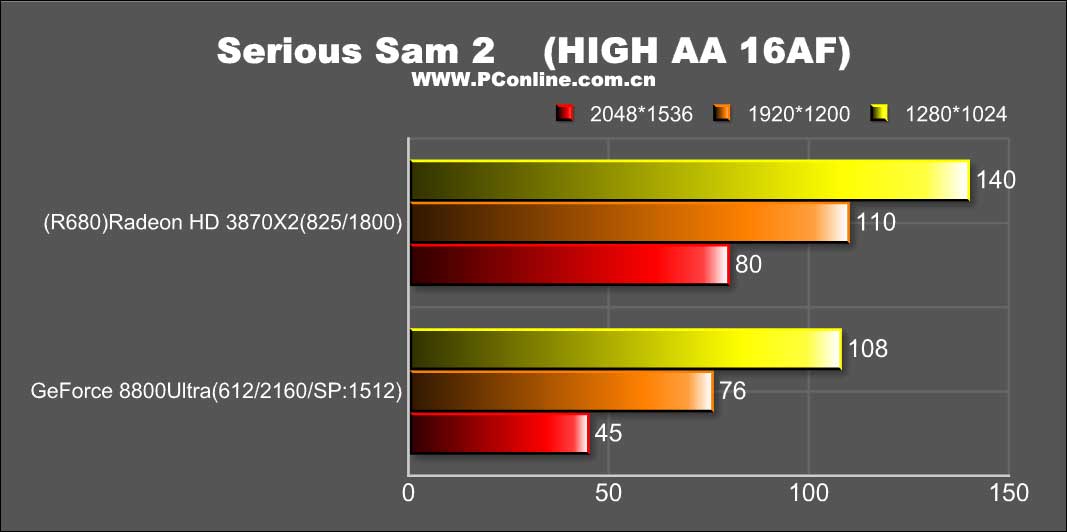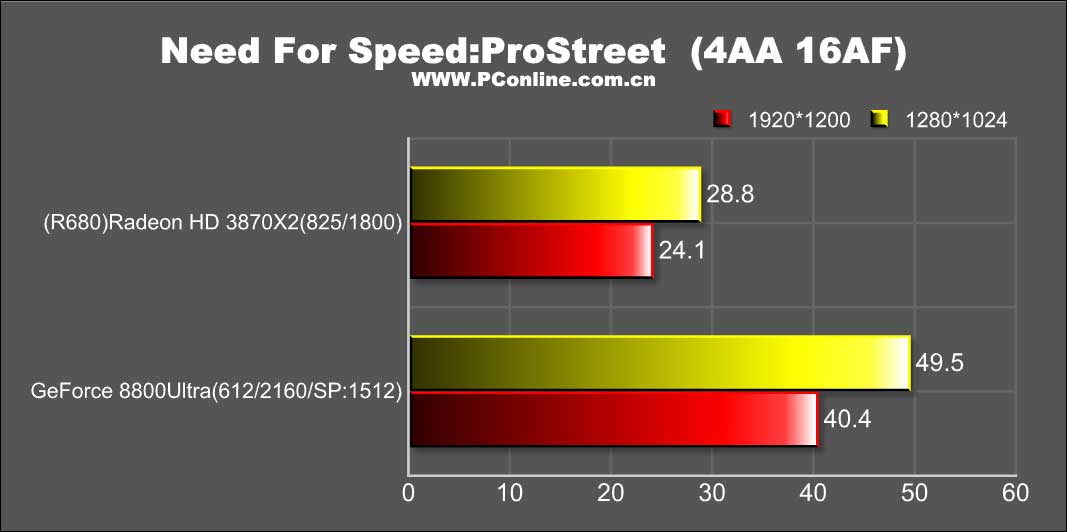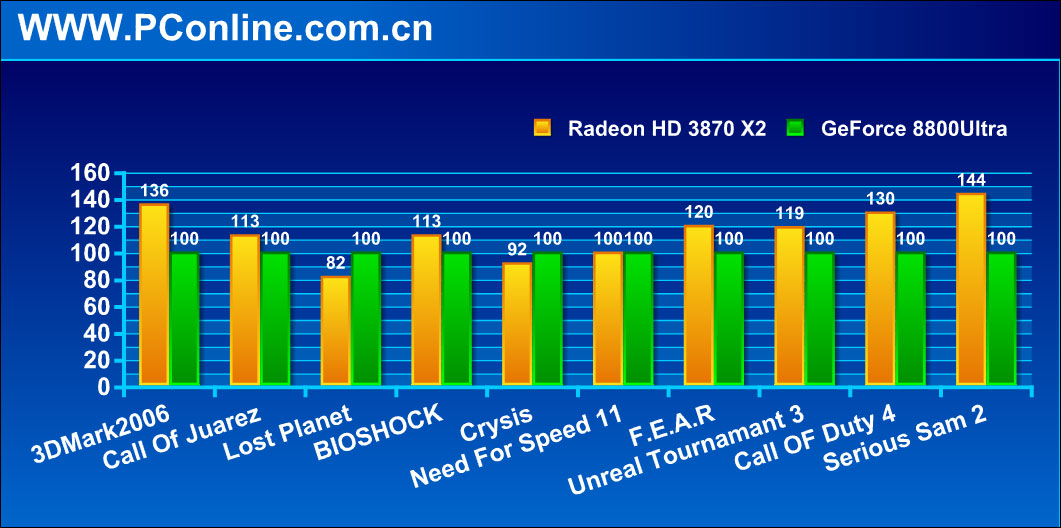Unknown Soldier
Veteran
As long as it can consistantly average 100FPS or more at 1680x1050 with 4xAA and 16xAF then it should be a winner .. and by consistantly I mean 98% of the time.
US
US
Little preview
Idle consume more power than the HD2900XT.
Quite impressive that it uses (very) slightly less power under full load, however.
http://forum.beyond3d.com/showpost.php?p=1106864&postcount=96PCIe2.0 seems to allow this card to flex.
http://forum.beyond3d.com/showpost.php?p=1106864&postcount=96
Though I identified the wrong chip (there's a 3 port version of the PLX chip) the chip on the boards we've seen so far only does PCI Express 1.1, it seems.
Now, I'd be a happier bunny if the released cards do use PCI Express 2.0 - but I'm pessimistic right now.
Jawed
err I'm confused. The graph I was looking at showed a considerable boost on a PCIe2.0 motherboard as compared to PCIe1.1. Is this due to the PCIe1.1 bus chip between the dies?
I think that's one of the promo graphs that ATi released back with the 3870, touting the benefits of PCIE 2.0.
As you know, on the board ATI Radeon HD 3870 X2 is two graphics processor. According to the information available at the reference motherboard ATI Radeon HD 3870 X2 will be installed 1 GB of memory GDDR3, which operates at a frequency of 2 GHz processors and related 256 - bit tyres. The product is meant for connecting to the bus PCI Express 2.0, which interact with the responsibility of the special chip-bridge. The truth seems to be in this role will be used PEX6347 not, as expected, but PEX8548. At the given scheme, the bridge is at the centre of charges between the two processors. Near each processor can be found on four chip memory.
The following illustration shows that the transition from PCI Express 1.1 for PCI Express 2.0 provides a noticeable increase in productivity - around 20-30%, depending on the application and the screen resolution.
Why should there be? The current 2.0 cards having problems are either due VIA just screwing something up, practicly meaning they're not following the spec 100%, and in some cases, too high clocked PCI Express bus (some motherboards have it at 133MHz, and have had problems with the new 2.0 cards, but downclocking it back to normal 100MHz has reportedly solved these problems)2) Why did they choose the 1.1 chip over the 2.0? Is their some sort of backwards compatibility problem with existing 1.1 spec motherboards with using the PEX6347?



Now if they found some way to make it appear as 1 card to all games with no need of AFR, I'd be sorely tempted to get one...
